The Lawmatics Blog
Insights on legal marketing, automating the law practice, and legal tech in general
About the session
Behind every great client experience is a system quietly keeping things on track. The newest automation updates in Lawmatics build on that foundation, making it even easier to build and manage their automated workflows.
In this session, Devon Butler and Clare Struzzi walk step-by-step through what’s new. They cover trigger-based automations, appointment workflows, shared entry rules, and a simple way to organize everything in folders. Together, these improvements give firms even more control, flexibility, and time back in their day.
Webinar slide deck
We are thrilled to bring you the latest bountiful harvest of fresh features and enhancements from the Lawmaticians! This latest release is ready to be plucked off the vine and enjoyed, so get ready to feast your eyes on a variety of enhancements that will cultivate efficiency, nurture collaboration, and help your law firm flourish.
Simplify client communication with the Message Center
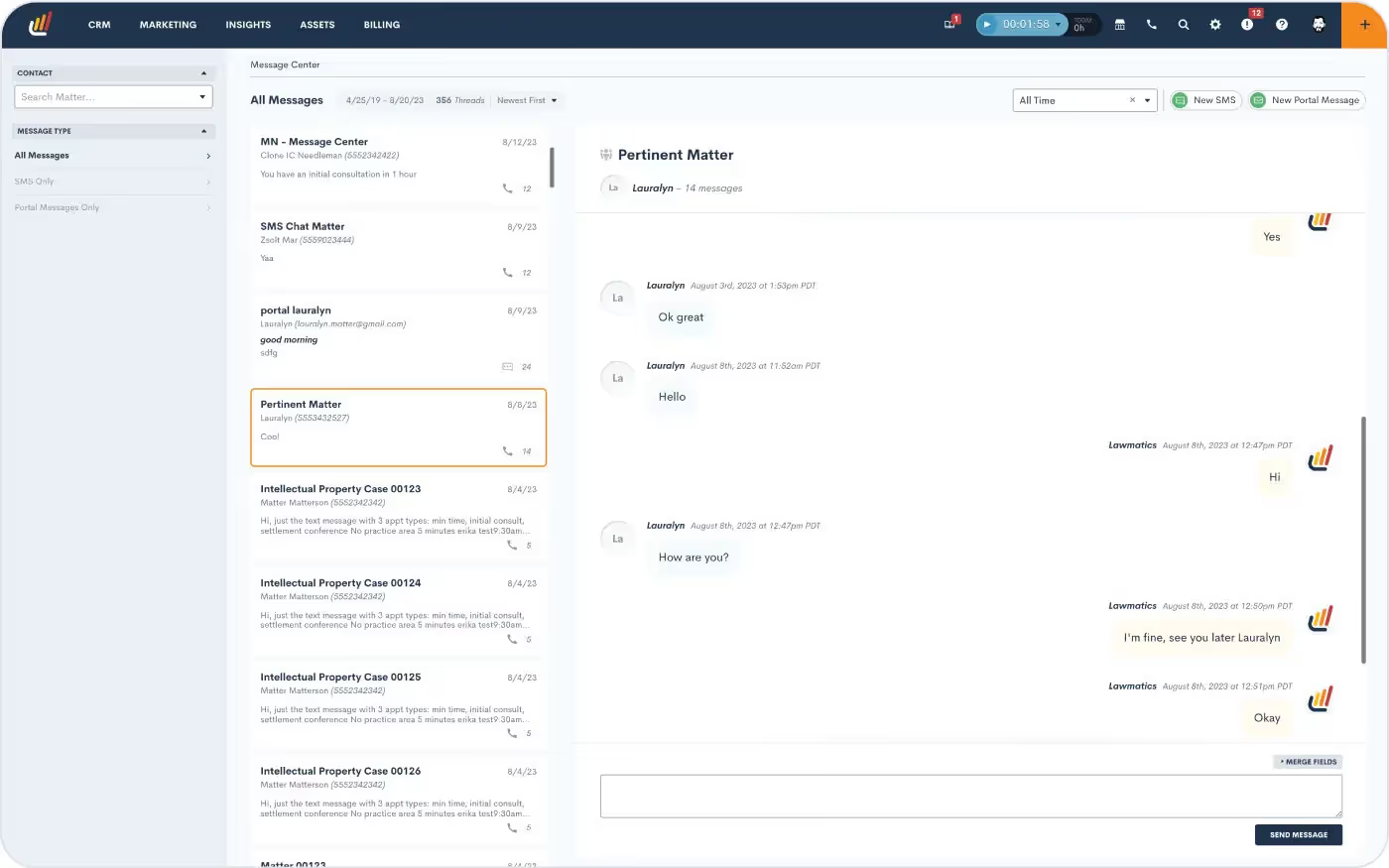
Say hello to the Lawmatics Message Center, your all-in-one dashboard for tracking and managing client communication. Stay on top of your inbox with centralized client messages — spanning texts and Client Portal interactions — in a single organized hub. You’ll be able to filter and sort messages, and even set permission levels for which messages your staff can view. With this powerful feature, staying connected to your clients is hassle-free.Learn how to get started with the Message Center.
Unlock internal visibility with User Activity Timelines
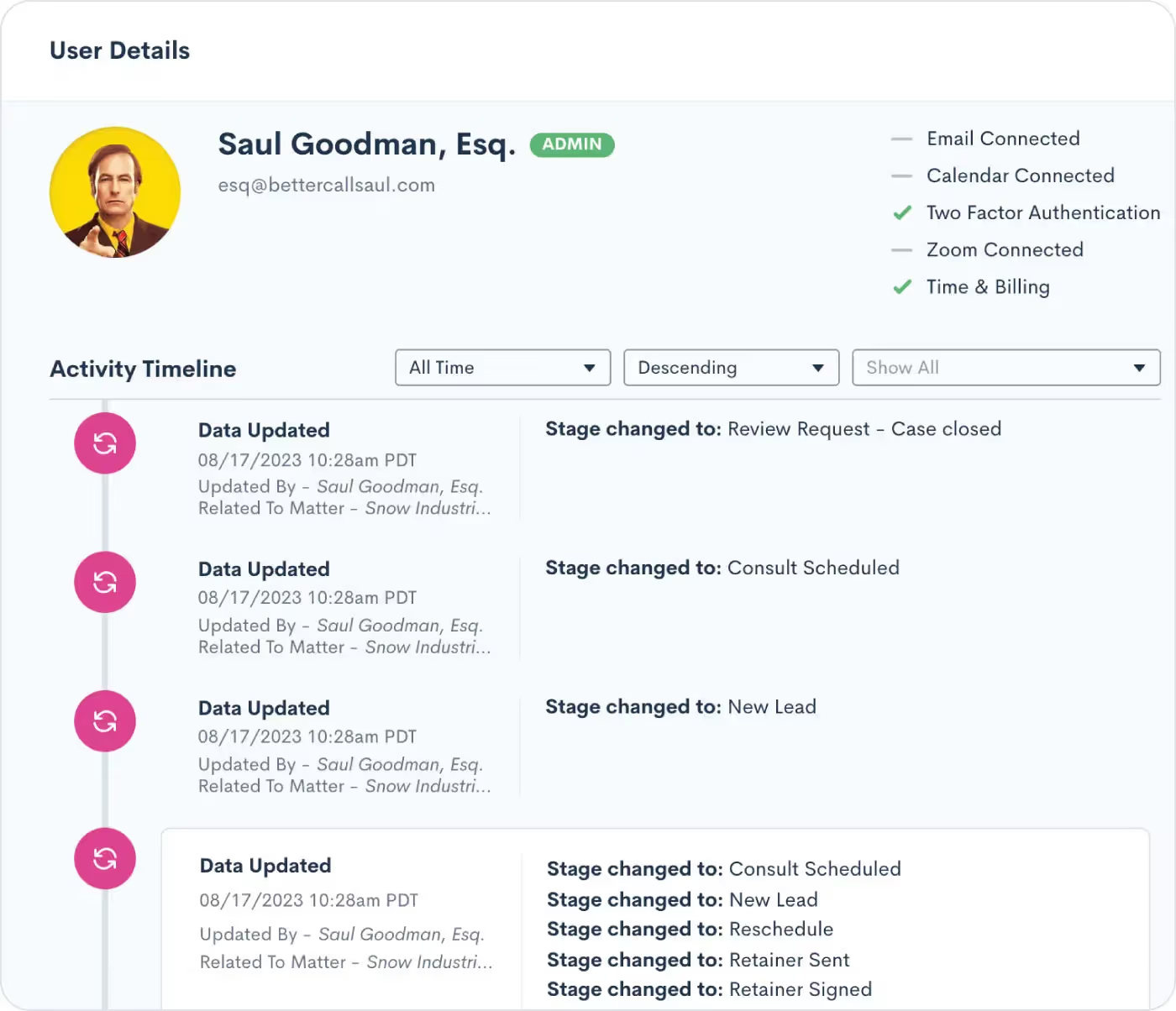
Meet the User Activity Timeline, a dynamic tool that brings enhanced oversight and collaboration to your law firm. With this exciting addition, administrators can now access a comprehensive view of each user’s activities, presented in a timeline format. From Matter updates to Task completions, client interactions to internal collaborations, this feature empowers administrators to stay informed and ensure optimal productivity across the board.Learn how to use the User Activity Timeline.
Fine-tune your sales cycle by tracking Time in Stage
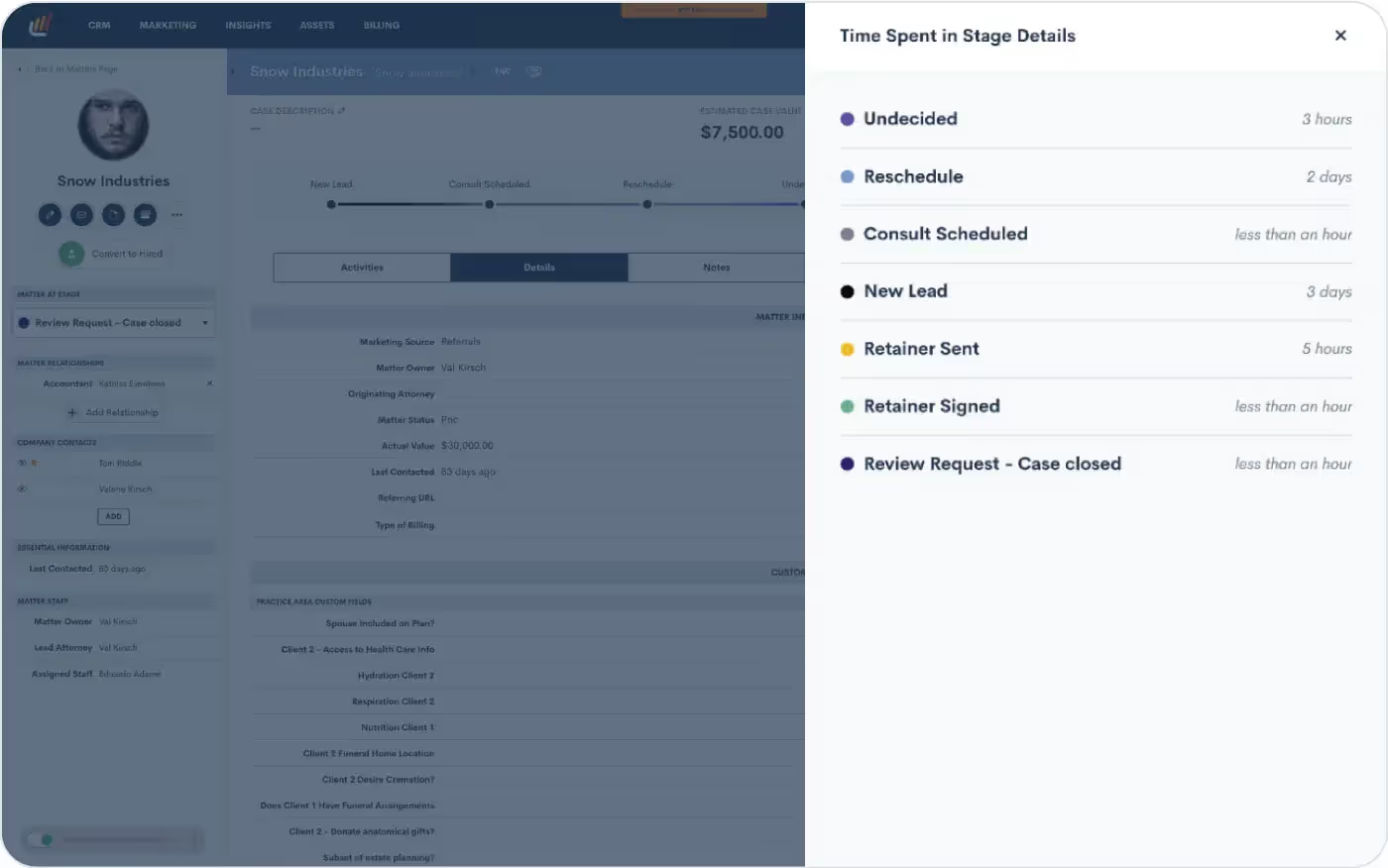
Tracking time isn’t just for billing — it’s instrumental in unlocking the power of data-driven decision making. Our new Track Time in Stage feature allows you to automatically log the duration of time each of your leads spends in each stage of your firm’s Pipeline(s). With this new capability, you can now easily identify bottlenecks or delays in your sales cycle. Armed with these insights, you’ll be able to fine-tune your processes and make informed changes that simplify your client journey, ultimately accelerating conversions.Learn how to start tracking time in a stage here.
Streamline Conflict Checking even further
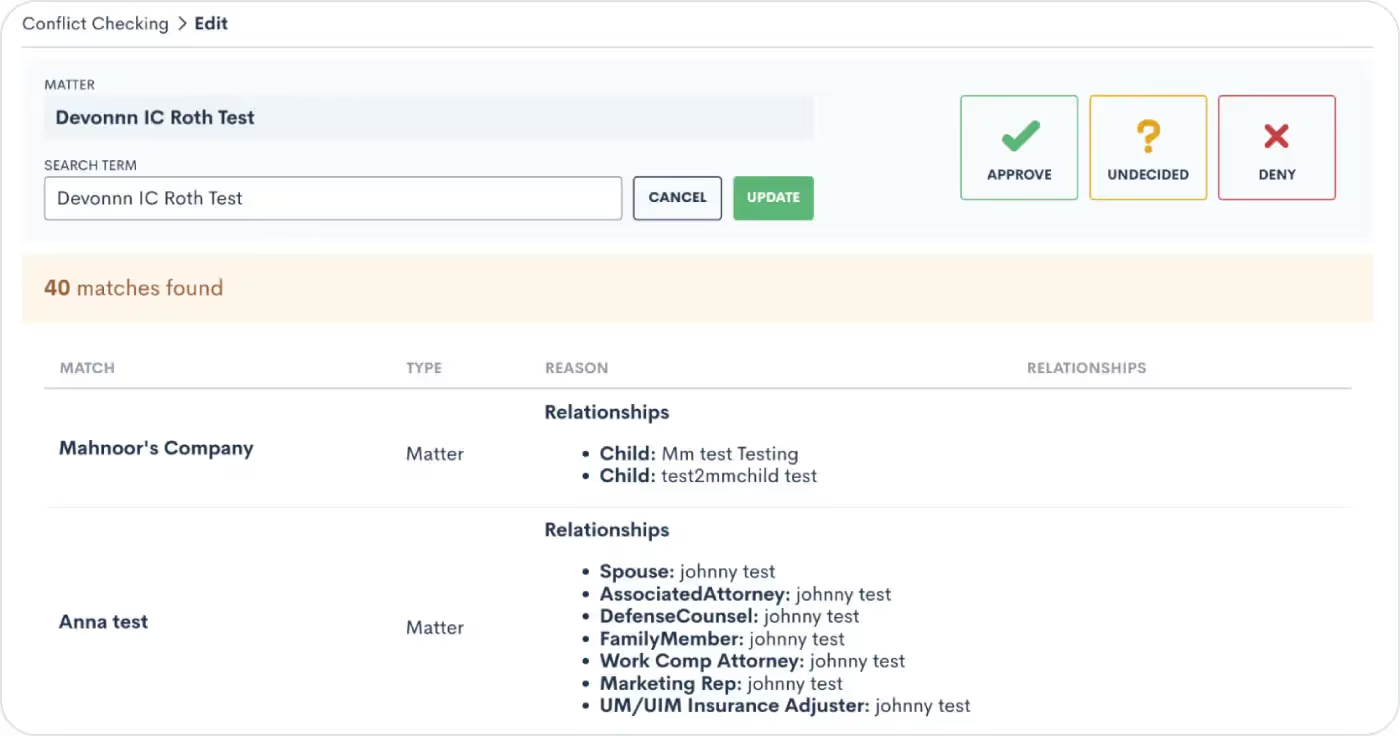
We understand that exact matches are just the tip of the iceberg when it comes to conflict identification. That's why our enhanced system now closely examines flexible search term matches as well as Contact relationships on Matters, ensuring that you have a holistic view of potential conflicts. Seamlessly navigate the complexities of your clients' networks, uncover connections, and make informed decisions that safeguard your firm's reputation and ethics. Say goodbye to missed connections and hello to a more comprehensive approach to identify potential conflicts that may have been overlooked previously.Learn how to conduct more thorough conflict checks here.
Delegate your to-do list with Email Assigning Inbox update

Our newly released Email Assigning Inbox feature is now even more robust, as you can now select another user(s) or role(s) to assign your incoming emails for you. Remember that most emails will automatically attach to the appropriate Matter. For Contacts with more than one Matter, the Email Assigning Inbox allows you (or your delegate) to manually assign emails to the proper Matter. When your delegate goes to their Email Assigning Inbox, they will see your emails in addition to their own. This flexibility allows you and your staff to prioritize and focus on the matters at hand.Not using the Email Assigning Inbox yet? Learn how to get started here.
And more!
- If you’ve opted to show the ‘No Stage’ column on your Pipeline, it will remain visible when you return to the Pipeline page after leaving
- Custom Sub-Statuses can be edited and/or removed in the Matters Settings page
- When using appointment-based Automations, choose to send an automated email from the Appointment host (and likewise for Events)
- Access email marketing campaign stats in your own custom integrations with the latest addition to our Open API
From elevated client interactions to improved behind-the-scenes firm functions, we've cultivated a collection of updates that will make your legal practice thrive even more. We hope you indulge in the richness of this month’s release!
As lawyers, although we might like to believe clients will come from just hard work and success, the truth is that word of mouth only goes so far. A recent survey concluded that 43% of participants relied on word of mouth to find their lawyer. So where does that other 57% go? In the highly competitive legal industry, marketing is a must. In today's evolving legal market you'd be doing yourself a disservice not to take advantage of law firm marketing automation software as 98% of legal firms say that intake software helps them make better decisions about marketing.Creating a successful marketing plan requires a diverse mix of marketing tactics, from blogging, to video content, to networking with other legal professionals. And while this may sound simple, the truth is that attracting clients to your law firm comes with many different challenges.Marketing a law firm is challenging for attorneys for several reasons:
- Legal services can be complex and specialized, making it difficult to communicate value to potential clients.
- Due to the strict ethical rules governing legal advertising, lawyers' marketing strategies may be limited.
- Attorneys often lack the time, resources, and expertise needed to develop and execute effective marketing campaigns.
- The legal industry is a competitive place, making it difficult for smaller firms and solo practitioners to stand out.
So how do lawyers attract more clients while still finding time to actually be a lawyer? In this guide we'll go over some of the best legal practice marketing tactics, and how automation can help.
What is marketing for a law firm?
Law firm marketing is the process of promoting your legal services with the intent of attracting new clients and ultimately generating more revenue. The end goal is to establish credibility and increase your visibility, ultimately persuading potential clients to choose you over the competition.Typically, the most popular law firm marketing tactics include:
- Content marketing
- Search engine optimization (SEO)
- Paid advertising
- Social media marketing
- Networking
For any of these tactics to work, you must have a deep understanding of your target market, who your competition is, and what unique experience your law firm can offer that no one else can.
Why do law firms need marketing?
Regardless of whether you sell cheese graters or legal services, the importance of marketing cannot be expressed enough. Marketing brings awareness to your legal services, engages your potential customers, and ultimately persuades them to hire you as their lawyer. Furthermore, an ongoing and effective marketing strategy doesn't just help maintain the demand for your legal services, but it will also boost your relevance, increase your reputation, and set you apart from the competition.Think of it this way— how do people find lawyers? They usually do a Google search or ask for referrals from friends and family. Irrespective of being the best lawyer in the world, your marketing plays a pivotal role in how many times your name will come up. You can bet your money that even if you’re a small law firm, you will generate more clients than the best lawyer in the world if you have a stronger marketing plan than them— it's really that simple.
How do you promote a legal practice successfully?
Successful law firm promotion starts with tools like marketing automation, referrals, social media, and blogging. Since marketing can take up a substantial amount of time and money, and lawyers already have enough on their plates as is, it's critical that they learn how to be more efficient with their workflow and processes. Recent statistics show that 95% of firms agree that since marketing is considered “non-billable” it’s a greater spending risk. As such, more and more lawyers are putting their marketing dollars where they can be sure they’ll produce the most results. Over the past few years, we've seen major developments in the ways that lawyers operate in order to be as efficient as possible.Some of the most effective ways lawyers promote their legal practice are:
Marketing automation
Thanks to the help of tools that specialize in process automation, lawyers can put the administrative aspect of their law firm, like marketing, on autopilot so they can focus their attention on billable work. Tools like drip email marketing allow lawyers to schedule personalized and targeted emails that don't just generate new business but also encourage repeat business.This hands-off approach means lawyers can build repeatable processes that automatically send themselves each time a lead or client moves from one stage of the client journey to the next. In other words, lawyers can engage clients consistently without stepping away from their legal work.Choosing a client intake software like Lawmatics with built-in marketing automation will save your firm more time, close more clients, and ultimately grow your law firm.
Referrals
Relying on word of mouth from former clients, professionals in your network, and colleagues is one of the most effective ways to bring in new business. In general, a personal recommendation is considered amongst most to be the most reliable way to find legal services,
Social media
Social media is a great place to build credibility for your law firm by generating a following. 84% of law firms generate their leads through organic social media traffic. Growing a following on platforms like Facebook is a great way to market your firm since it gives your audience the opportunity to directly interact with you. By sharing content, commenting and interacting, you can significantly drive your engagement, and ultimately drive more traffic to your law firm website.Yet it's important to note that not all social media platforms are suited for lawyers. And yet while there are no official rules regarding where lawyers can and can't be present on social media, you're probably not going to see a lot of lawyers on a platform like Snapchat. The best social media platforms for lawyers are:
- YouTube
- TikTok
Make sure you check out our post where we show you 9 attorney TikTok accounts you need to follow for marketing inspiration
Blogging
Surprisingly, only about 27% of lawyers have a blog. Yet smart marketers know how important having your own blog is. Although a presence on social media is useful, it's still rented space. Ultimately, you're at the mercy of an algorithm you can't control.A blog is your own piece of land where you get to establish your authority on what you know best— law! By creating regular content that resonates with your audience, you'll be more likely to generate recurring visitors that turn to you as the go-to person for their legal questions. Not to mention with a solid SEO strategy in place, your blog will help your legal website appear higher on Google search results.
Website
A well-constructed website makes it possible for clients to find your law firm online and establishes credibility for your business. The more SEO you incorporate into your website, the higher your page will rank in Google search results, giving you increased visibility on a larger scale. A website also allows you to track visitor behavior such as click-through rates, website traffic, and conversions, allowing you to measure the effectiveness of your marketing.
Networking
Attending industry events is an essential method for networking with other legal professionals and potential clients and building your reputation as an expert in your field. Good old fashioned face-to-face interactions will always be one of the most reliable ways to find new clients.
How does a firm set up a marketing plan?
Setting up a marketing plan for your law firm that will yield results requires 8 key steps.
1Define your target audience
Who are you trying to market to and what kind of marketing appeals to them?
2Research your competition
Analyze what your competitors are doing to attract and convert new prospects into clients and determine how you can do it even better.
3Determine what you can offer that’s unique
Establish what your unique selling point is and how you can set yourself apart from the competition with unique positioning.
4Decide which marketing channels you’ll use
Decide which marketing channels you believe will be the most lucrative for your business, from e-mail marketing, to starting a blog, to creating your social media strategy.
5Set specific goals
A marketing plan is useless without specific goals in mind. The more specific you can be about what it is that you hope to achieve, the more you can fine tune your marketing efforts.
6Determine your budget
Have a specific number in mind about how much you can afford to spend on your marketing.
7Implementation
Dive in and get started. Start executing what it is that you set out to do and measure the results
8Consistent evaluation
An effective marketing plan for your law firm is one that should consistently be revisited and evaluated so that you can make whatever changes necessary to get the results you want.
How to promote a law firm? With Lawmatics
Lawmatics, the number one legal software, was built to make marketing effortless. From responding to new leads automatically to sending out the right email to the right person at the right time, Lawmatics is here to help your growing law firm grow even more.Are you ready to see why Lawmatics legal intake, law practice CRM, marketing automation, and legal billing software is what everyone is talking about? Sign up for a free demo today!

Imagine running a law practice where technology blends seamlessly with your expertise, creating client experiences that no competitors can match.A smartfirm does just that — strategically using software and automation to boost efficiency and streamline operations, allowing for a laser-focus on practicing law.We asked some of our customers what running a smartfirm means to them, and how Lawmatics has helped them stay on the cutting edge. Here are their responses:
What does running a smartfirm mean to you?

Using software and automation strategically to maximize employee efficiency, improve processes, and improve communication with clients.
— Dominic Montagnese, Attorney & Managing Partner, Cherewka Law, PC

Running a smartfirm means efficiency to me. The ability to utilize technology, including automations, to efficiently handle administrative and legal tasks.
— Christene Downs, Attorney & Owner, Krupa Downs Law, PLCC

Utilizing technology to maximize automations and reduce day-to-day tasks.
— Anna Burr, Owner, Law Office of Anna L. Burr

One using the latest legal research and document preparation and storage applications along with integrated marketing and information management applications.
— Charles Hunter, Attorney and Owner, Hayes Hunter PC

Serving both our clients and our team members by making the operations of the firm smooth and consistent. Multiple apps used in collaboration to create a seamless transition from PNC to client to referral partner and all the tasks involved create an excellent process for our team and our clients.
— Autumn Boyd, Attorney & CEO, Law Office of Autumn Witt Boyd, PLCC

Working efficiently and with heavy usage of technology to streamline processes and procedures.
— Erdal Turnacioglu, Owner, President & CEO, Erdal Employment Law

It means having client contact automated as much as possible to make sure nothing falls through the cracks. Having processes run smoothly with task reminders helps our firm to focus more on providing quality service, with no client forgotten. Enhanced reporting tells us where there is room for improvement, and what is working well for us.
— Wendy Farrie, Client Liaison, Cookman Law

Running a smartfirm means consistently building efficiencies that can scale.
— Adam Juratovac, Lawyer, Juratovac Law
How has Lawmatics helped in transforming your law firm into a smartfirm?
“
“Improved automation, processes, tracking, and communication.”
— Dominic Montagnese, Attorney & Managing Partner, Cherewka Law, PC
“
“Lawmatics has transformed my law firm into a smartfirm by allowing me to use automations for routine tasks & processes so that my time and my staff time can be focused on the clients and providing the best legal services we can; not on entering data, sending appointment requests or emailing reminders. We can automate many tasks.”
— Christene Downs, Attorney & Owner, Krupa Downs Law, PLCC
“
“I've significantly increased automations to streamline intake and client nurture sequences.”
— Anna Burr, Owner, Law Office of Anna L. Burr
“
“It allows the firm to gather information from leads for evaluation, to contract online with leads, and to identify the source of the lead.”
— Charles Hunter, Attorney and Owner, Hayes Hunter PC
“
“The main reason we moved to Lawmatics was because the user interface seemed more helpful than our previous CRM software and the ability to automate more of our process has been invaluable.”
— Autumn Boyd, Attorney & CEO, Law Office of Autumn Witt Boyd, PLCC
“
“Just starting out, but I can already see that it has automations that will help me stay on top of leads and work-related projects.”
— Erdal Turnacioglu, Owner, President & CEO, Erdal Employment Law
“
“Lawmatics has provided useful automations for client contact, and better management of our pipeline. Invoicing and Billing has also helped streamline our processes to make it seamless.”
— Wendy Farrie, Client Liaison, Cookman Law
“
“Lawmatics helps me build efficiencies so I can scale.”
— Adam Juratovac, Lawyer, Juratovac Law
Final thoughts
Thanks to each of our customers who took the time to share their perspective on the smartfirm revolution!Major breakthroughs in technology, like automation and AI, are defining a new era in law. We’re proud to lead the next evolution of the legal client experience.Want to transform your law firm into a smartfirm? Book a personalized demo of Lawmatics today.
Your to-do list seems unending, right? The contract review, the case analysis, the unanswered emails. The legal profession has always been synonymous with hefty workloads and long hours. But what if you could relegate these time-intensive tasks to a digital ally, paving the way for more strategic work and a better work-life balance?Generative AI isn’t just a trendy buzzword—it's your new associate. Many law firms have already adopted tools to fortify their expertise. Generative AI is an efficient team player, assisting with everything from drafting legal documents to conducting comprehensive research.
The AI disclaimer
The legal profession tends to resist technological advancements, such as generative AI tools like ChatGPT and Google Bard, with immediate talk of bans and warnings of ethical violations. Despite initial restrictions, like those imposed by US District Court judges and law schools like Berkeley and the University of Michigan, legal tech evangelist Nicole Black argues that these technologies should be embraced as valuable tools to streamline work and increase efficiencies. She suggests that legal professionals have an ethical duty to learn about and make informed decisions about these technologies, mirroring a historical pattern of initial resistance followed by eventual acceptance in the legal field.And we’ve already seen bad lawyering play out with ChatGPT, as some legal professionals have relied heavily on ChatGPT for legal research without verifying the accuracy of the information provided, leading to sanctions.Generative AI holds immense promise for the legal industry, but this also warrants careful attention to ethical considerations and challenges, including:
- Accuracy and accountability: Legal professionals must critically evaluate the AI-generated advice, always corroborating its validity.
- Data privacy and confidentiality: Legal professionals are responsible for ensuring robust data privacy, and security measures are in place.
- Transparency and explainability: Legal professionals must unravel the "black box" of AI and ensure the reasoning behind AI-generated legal analysis is clear and understandable.
- Liability and professional responsibility: Professionals need to navigate the landscape of liability for errors or omissions in AI-generated content. Legal professionals should delineate the boundaries of AI usage, managing client expectations to avoid potential legal and ethical issues.
With some guardrails, AI can help legal professionals get through dense workloads. The results ended in a tie in a casual study comparing the abilities of AI ChatGPT and a human IP lawyer in drafting articles on the legal issues of using generative AI at work. The AI came out ahead in terms of efficiency and readability. At the same time, the human excelled in depth and avoidance of repetition. The experiment highlighted potential practical applications of AI but also emphasized the necessity for clear guidelines.
The power of generative AI: transforming efficiency and unleashing potential in the legal practice
Generative AI, harnessing the might of deep learning models like neural networks, is not merely influencing the legal profession—it's poised to redefine it. The transformative potential of generative AI in legal practice transcends task automation, shaping the profession at its core.Data processing and research quality: One of the core advantages of AI is its ability to rapidly and accurately process vast amounts of data. This not only economizes time but dramatically enhances the quality of research, providing legal professionals with an in-depth, comprehensive understanding of the multifaceted legal landscape.Pattern recognition: AI shines in its pattern recognition capabilities. Through machine learning algorithms, AI can detect patterns and correlations in substantial datasets that may elude human analysis, offering critical insights. These insights prove invaluable for predicting case outcomes, assessing risks, and formulating potent legal strategies.Cost savings: Incorporating AI in legal practice can save significantly. By automating tasks and boosting efficiency, law firms can optimize their resources and concentrate on services that add more value—yielding benefits to the firms and their clientele.But what does this AI revolution look like in action? Many AI applications are already being put to work in daily law firm operations.
Legal drafting & case review
Take, for instance, Harvey AI. This ground-breaking fusion of natural language processing and machine learning aids firms with contract analysis, due diligence, and regulatory compliance. Meanwhile, Auto-GPT technology combines OpenAI's text-generating AI models with a companion bot for autonomous decision-making, accelerating contract review and summarizing specific clauses effectively.
Legal research
AI has made its mark in legal research as well. Platforms like Casetext harness AI to help legal professionals locate pertinent case law, statutes, and regulations swiftly.CoCounsel, a product of OpenAI and Casetext collaboration, is a reliable legal assistant tailor-made for lawyers' needs. Blue J L&E reconsiders legal research and analysis, using AI to predict case outcomes and probe complex legal issues—analyzing factors and outcomes, not merely keywords.
Marketing & intake
On the client interface side, LM[AI] incorporated into Lawmatics provides an all-in-one CRM solution, saving valuable time by generating professional email copy with a single click. Similarly, Smith.ai leverages AI-integrated virtual receptionists to ensure timely responses. At the same time, Gideon streamlines client intake and document automation for a more effective process.Generative AI's application is no longer a technological novelty; it's a strategic game-changer. As legal professionals increasingly embrace AI, they lead the profession into a transformative era of heightened efficiency, innovation, and strategic edge. Law practice is set to be redefined, with generative AI leading the charge.
Harnessing generative AI with prompt engineering
The significance of prompt engineering in the legal industry can't be understated. Those who master the art of prompt design will stand above their peers. But, prompting is not a one-size-fits-all solution. There are certain limitations to the generative AI tools, such as the inconsistent output of the same prompt and the inability to resolve hallucinations and bias in the datasets.Here are the essential elements you need in a successful prompt:
- Define the role: "You are an expert legal research assistant..."
- Establish clear intentions: "...and your task is to summarize the key holdings and legal principles from the following court cases related to employment discrimination."
- Provide context and background: "The cases are 'Smith v. XYZ Corp.,' 'Johnson v. ABC Inc.,' and 'Doe v. MNO LLC.' These cases are from different jurisdictions but share a focus on age discrimination in employment.
- Insist on specificity: "Note that 'Smith v. XYZ Corp.' is from the 9th Circuit Court, 'Johnson v. ABC Inc.' is a Supreme Court decision, and 'Doe v. MNO LLC.' is from the New York State Court. Please identify the jurisdiction for each case in your summaries."
- Direct the format: "Provide the summaries in bullet points for each case, highlighting key points of law, the court's reasoning, and the implications of each ruling."
- Use examples or references: "I appreciate a clear, concise writing style similar to that found in the 'Legal Information Institute' case summaries."
Here's how the entire prompt might look when you put it all together:
You are an expert legal research assistant, and your task is to summarize the key holdings and legal principles from the following court cases related to employment discrimination: 'Smith v. XYZ Corp.,' 'Johnson v. ABC Inc.,' and 'Doe v. MNO LLC.' These cases are from different jurisdictions but share a focus on age discrimination in employment. Note that 'Smith v. XYZ Corp.' is from the 9th Circuit Court, 'Johnson v. ABC Inc.' is a Supreme Court decision, and 'Doe v. MNO LLC.' is from the New York State Court. Please identify the jurisdiction for each case in your summaries. Provide the summaries in bullet points for each case, highlighting key points of law, the court's reasoning, and the implications of each ruling. I appreciate a clear, concise writing style similar to that found in the 'Legal Information Institute's case summaries.
You may have to supply the AI with the primary text source for a prompt like this. To avoid bad practices, remember that the AI's responses should be validated for accuracy.
Tips for structuring prompts:
- Use the first prompt to state your purpose clearly.
- Ask one question at a time.
- For complex requests, break it down into a series of simpler prompts.
- Use straightforward language and avoid legalese.
- Check the accuracy of the AI’s outputs.
Practical use cases of generative AI at a law firm
Generative AI is reshaping traditional tasks and processes that once monopolized legal professionals' time. From contract drafting to case reviews, AI capabilities can streamline and optimize operations, liberating lawyers to focus their expertise on higher-value tasks.Here are 6 prompts you can introduce to your law firm today:
1Drafting legal documents with precision and efficiency
Prompt: “As an experienced contract attorney, I need you to refine our standard Mutual Non-Disclosure Agreement (NDA). The agreement between two software development companies must comprehensively address intellectual property concerns. Please pay special attention to sections X, Y, and Z, where we've received feedback about clarity and comprehensiveness."Why it works: By clearly defining the role and task, this prompt allows you to leverage AI in optimizing your standard contracts, particularly those with recurring revisions. This prompt could be a significant time-saver in your contract drafting and review process.
2Enhancing case review competence
Prompt: "Imagine a fictional case, 'Doe v. Alpha Enterprises,' where Doe, a small tech startup, alleges that Alpha Enterprises infringed on its software patent. Summarize the facts, claims, defenses, and the hypothetical court's decision. Also, identify any real-world legal precedents or principles this case might establish."Why it works: This prompt provides context and specificity, enabling AI to help with initial case review, preliminary legal research, and identification of potential precedents. It's a valuable tool during the case analysis phase, providing the groundwork for your litigation strategy.
3Simplifying statutory research
Prompt: "As an AI legal research assistant, summarize the key differences between GDPR (General Data Protection Regulation in the EU) and CCPA (California Consumer Privacy Act). Highlight the essential compliance requirements for businesses in each jurisdiction."Why it works: The defined role, clear intentions, and specific references in this prompt set the stage for efficient statutory research, helping you keep abreast of compliance requirements across different jurisdictions. It's ideal for general legal research or when updating client advisory materials.
4Streamlining case law research
Prompt: "Summarize the following recent Federal Circuit Court rulings on the Fourth Amendment search and seizure doctrine, focusing on decisions involving digital privacy issues. This will help us update our client advisory templates."Why it works: This prompt encourages AI to condense complex legal rulings into concise summaries, keeping your firm updated on vital legal developments. It's useful when preparing briefs, memoranda, or client advisories on recent case law.
5Optimizing legal marketing
Prompt: "As a content creator for a law firm specializing in personal injury law, write a compelling blog post outlining the steps to take after a car accident. Our firm tells clients to take the following x, y, and z steps. Ensure it is empathetic, informative, and inspires action. Include a Call-to-Action reader to contact our firm for a consultation."Why it works: Using AI in content creation can produce engaging, informative articles that help establish your firm's authority and client engagement. This prompt can be used whenever you need to create content for your firm's blog or social media platforms.
6Streamlining the client intake process
Prompt: "As an AI intake assistant for an employment law firm, design a script for an initial phone call with a potential client who believes they have been wrongfully terminated. The script should gather key details about their case without delving into specifics that could breach confidentiality. It should also reassure them of our firm's extensive experience and expertise in employment law."Why it works: The detail-oriented nature of this prompt allows AI to assist in crafting an efficient and empathetic client intake process, improving the client experience right from the first call. It's beneficial in refining the initial client intake process.
The power of role-playing in legal practice: preparing for real-life scenarios
1Anticipating opposing counsel strategy
Prompt: "Assume you're a seasoned criminal defense attorney representing a client accused of insider trading. Given the charges and public information, what arguments and strategies might the prosecutor employ?"Why it works: This prompt enables lawyers to think from the prosecution's perspective and anticipate potential strategies. It can be applied while strategizing defense for criminal cases, giving you a leg up in your preparation.
2Enhancing client interview skills
Prompt: "Role-play as a potential client seeking representation for a complex family law issue involving international child custody laws. Respond with high emotional distress and confusion about the legal process to help our attorneys practice empathetic and clear client communication."Why it works: This prompt helps attorneys improve their skills in handling emotionally charged client interactions, which is critical in family law and other sensitive legal issues. It's ideal for training sessions focusing on improving client interaction skills.
3Preparing for witness cross-examination
Prompt: "Imagine being a hostile witness in a personal injury case, avoiding responsibility for a workplace accident. Provide evasive or combative responses to my questions to help our team practice managing difficult witnesses."Why it works: Using AI for role-play can equip lawyers with effective techniques to extract useful information from uncooperative witnesses. It's a great tool during the preparation phase for depositions or trials.
4Honing negotiation skills
Prompt: "Take the role of a mediator in a contentious divorce case where assets and child custody are in dispute. Provide potential solutions and compromises to help resolve the deadlock."Why it works: Engaging with AI in this manner can expose lawyers to new perspectives and solutions they may not have considered, ultimately making them more effective negotiators. It can be utilized in preparation for mediation or negotiation sessions.While AI offers a non-judgmental space to practice and refine legal strategies, its outputs should always be reviewed and vetted by competent legal professionals before being used in real-case scenarios. By understanding and employing the right prompts, you can harness the power of generative AI to revolutionize your legal practice.
5Developing interrogatory questions
Prompt: "You're a personal injury attorney investigating a complex multi-vehicle accident. Draft focused interrogatory questions to unravel the chain of events and identify all parties involved and potentially responsible."Why it works: This prompt helps lawyers prep and formulate precise, purposeful questions. Practicing the craft of effective interrogatories equips lawyers to prepare thoroughly for the discovery process in personal injury cases, ensuring comprehensive fact-gathering.
Continuing the dialogue with AI
Embracing the rise of AI in the legal profession is no longer an option but a strategic necessity. Generative AI technologies such as ChatGPT can significantly enhance efficiencies in drafting legal documents, case reviews, statutory research, and client intake processes. AI role-playing scenarios provide an innovative approach to improving legal strategy. This technology has proven itself a proficient 'associate,' capable of executing tasks accurately and quickly.AI is not about replacing the human element of legal practice but about augmenting it. By taking over mundane, time-intensive tasks, AI enables legal professionals to focus on what matters the most: their clients, their strategy, and high-value work that requires their unique expertise.
Marketing automation software: the best investment for law firm growth
Staying ahead of the competition requires more than just legal expertise for law firms. Law firms must leverage tools to streamline marketing operations – like automating repetitive marketing tasks and finding ways to enable personalized client interactions at scale.
Why invest in marketing automation software?
Investing in marketing automation software offers law firms numerous advantages that can transform their marketing processes, enhance lead engagement, and analyze campaign performance. What are the benefits of marketing automation? Automation allows for personalized client journeys, delivering the right message to the right audience at the right time. Data-driven insights are a goldmine for optimizing marketing strategies. Marketing automation software collects valuable metrics such as email open rates, click-through rates, and conversion rates, enabling law firms to refine underperforming campaigns and identify successful strategies.With marketing automation software, law firms can optimize marketing processes, enhance lead engagement, and analyze campaign performance. This strategic decision empowers the marketing team, delivers personalized experiences, and maximizes return on investment.
Optimize marketing processes
Marketing can be a time-consuming and resource-intensive endeavor. Manual marketing processes can be overwhelming, from managing email campaigns to tracking leads and analyzing data. Marketing automation software offers a solution by automating these tasks, freeing up valuable time for your marketing team.Automated workflows within marketing automation software allow you to create personalized client journeys, delivering the right message at the right time. You can tailor your marketing campaigns to resonate with potential new clients (PNCs) by segmenting your audience based on demographics and engagement behaviors (e.g., downloading a free eBook).
Enhance lead engagement
Clients and PNCs expect personalized and timely interactions. Marketing automation software empowers law firms to deliver just that. You can use features like email automation, personalized content recommendations, and chatbots to create seamless client experiences during legal matters.Imagine a potential client visiting your website to research a specific legal issue. With marketing automation software, you can automatically deliver relevant content and resources to their inbox, accomplishing two key goals: 1) showcasing your expertise and 2) nurturing the relationship. You can create soft-touch nurture campaigns that stay highly informative without soliciting leads.
Analyze campaign performance
Data is a goldmine for any marketing strategy, and a marketing automation tool excels at collecting valuable data points. You can gain insights into the effectiveness of your campaigns by tracking metrics such as email open rates, click-through rates, and conversion rates.Any marketing automation platform worth its salt will offer comprehensive reports to provide a holistic view of your firm's marketing performance. This data-driven approach allows you to identify successful strategies, refine underperforming campaigns, and allocate your marketing budget more effectively.
How to choose a solution: evaluating which marketing automation is best
Let's look at how you can evaluate the right marketing automation capabilities for your law firm's growth.
1User-friendly interface
A user-friendly interface is paramount when considering marketing automation software. Your team should be able to navigate the software intuitively. Look for tools that offer a clean and organized dashboard, easy-to-use drag-and-drop editors, and straightforward workflows. The software should empower your team to create and manage campaigns efficiently without extensive technical knowledge.
2Integration capabilities
To leverage the full potential of marketing automation software, it should seamlessly integrate with your existing systems. Evaluate whether the software integrates with your customer relationship management (CRM) software, practice management software, email marketing platforms, and other tools crucial to your tech stack. Syncing data across platforms ensures a unified view of your clients. It facilitates efficient communication between your marketing and sales teams.
3Personalization and segmentation options
Marketing automation software should enable you to create personalized experiences at scale. Look for software that offers robust personalization and segmentation capabilities. The tool should allow you to segment your audience based on various criteria such as demographics, behavior, and interests. This segmentation enables you to deliver targeted and relevant content to specific client segments, increasing the chances of conversion.Additionally, the software should support dynamic content, allowing you to customize messages and offers based on individual client attributes. By delivering tailored content, you can create a personalized experience that resonates with your clients and fosters a deeper connection.
4Automate workflows
The heart of marketing automation software lies in its ability to… well–automate tasks. Evaluate the software's automation capabilities, such as email automation, lead nurturing, and follow-up sequences. Look for a visual workflow builder to map out your marketing processes easily.Automation workflows should be customizable and flexible, enabling you to set triggers, conditions, and actions that align with your firm's needs. Whether automating lead scoring, sending targeted emails, or assigning tasks to your team, the software should empower you to streamline your marketing efforts and maximize efficiency.
5Generate reports
Look for software that provides in-depth reports of key metrics such as open rates, click-through rates, conversion rates, and engagement levels. The tool should offer real-time reporting dashboards that visualize data clearly. Interactive charts, graphs, and customizable reports allow you to drill down into specific campaign performance and identify areas for improvement.
6Great customer support
Responsive customer support can significantly impact, and improve, your experience with the tool. Look for providers that offer timely and knowledgeable support, whether it's through email, chat, or phone. A reliable support system ensures that you can resolve any issues quickly and maximize the value of the software.As your law firm grows, your marketing automation needs will evolve. Marketing automation tools can future-proof your law firm, help it grow, and will scale with your firm.
Embracing marketing automation for law firm growth
When choosing the best marketing automation software for law firms, Lawmatics is an excellent option because it was built for the legal industry. Lawmatics' automation capabilities are designed to address the unique needs of law firms. The software automates repetitive tasks, consolidates data, improves internal communication, and eliminates human errors.Investing in marketing automation software like Lawmatics is not just a technological upgrade; it's a strategic decision that can transform your law firm's growth. Through Lawmatics, law firms can run efficient marketing campaigns and seize every new client opportunity with targeted messaging and impeccable timing.
In the wake of the COVID-19 pandemic, many law firms transitioned to a remote work setup to keep their operations running while keeping their employees safe. While remote work has many benefits, such as increased flexibility and cost savings, it also presents unique challenges, particularly when it comes to managing and supervising remote workers. This blog post will provide law firms with best practices for ensuring adequate supervision and oversight of their remote workers, including effective communication, performance metrics, and technology solutions.
Remote work now the norm
For many law firms, remote working is no longer something new, and most have the ability to allow employees to work virtually. For some, it has been an innovative and positive experience, but others cannot wait to get back to working in an office as they miss the social aspect of a workplace and the structure it brings to the workday.Not every role can be successfully performed remotely, even in a law firm. Every person in a business must add value, as must every position. If remote working deteriorates the person’s impact or the role, then remote working is inappropriate and needs to be refused. In scenarios such as this, the needs of the firm and the role must outweigh the needs of the individual unless a sensible and allowable workaround can be achieved.Firms that initially had been reluctant to have employees work from home soon realized the need to be able to trust employees to get their work done remotely. Some firms even reviewed their office space requirements and considered downsizing their offices to benefit from the associated cost savings. However, managing a remote legal team will be different than supervising on-site attorneys and support teams. How can firms confidently manage remote employees without micromanaging them?
Challenges of remote law firm employees
Whether a firm’s remote employees used to work from your office or have only ever worked virtually, there will likely be challenges regarding their management. Some remote workers find the lack of face-to-face supervision results in inadequate direction. As a result, they may struggle with a lack of access to information and suffer from social isolation and distractions. A remote setting might worsen the situation if the firm practice areas are siloed.Fortunately, these challenges can be overcome with some strategic adjustments in management style. Here are some best practices for effectively supervising remote workers:
Open communication
Regular, intentional communication is critical when managing remote employees. Here are some strategies:Identify tools you will use to communicate. Firms must pinpoint the tools they will need to connect with remote employees, establish a pattern of regular conversations, and discuss their expectations regarding responsiveness.Schedule regular meetings. A “standing” team meeting held at the beginning of each week to review the week ahead, along with monthly team meetings, help ensure that everyone communicates regularly.Separate team communication from client communication. For unscheduled team communications, determine what tools you will utilize. Teams chat? Slack? Law practice management technology? Manage, organize, store, and retain client communications via email, text, and through a secure client portal.Establish expectations for availability. Always respect people’s time. If you want your team to be available during certain times, make that known. However, is it realistic or fair to expect quick responses? Reserve messages sent after hours, on holidays, and on weekends for items worth the disruption.Create a virtual “water cooler.” All employees, including remote ones, need to blow off steam, share information about special events, and discuss something besides work with their colleagues to forge bonds and strengthen relationships.By clearly outlining expectations and eliminating subjectivity when measuring performance, your firm’s communication with remote employees will be more effective and less stressful, resulting in increased job satisfaction, a more robust company culture, and reduced turnover.
Provide adequate security and confidentiality
A firm cannot place the same levels of control around physical data and equipment in a remote environment as it can in the office. However, the obligation to protect and securely manage firm and client data must be at the forefront of all remote working considerations. It is the firm’s responsibility to assess the suitability of the employee’s environment and provide the necessary equipment to work remotely, whether that involves technology or office furniture.Consequently, firms must have procedures and policies in place to protect the confidentiality of client data. This might include requiring employees to work paperless, insisting that staff members lock screens when away from their PC/laptops, and ensuring that remote employees store files securely at home.Firms that do not provide technology to remote staff, instead requiring them to work from their own PCs and laptops, are putting client data at risk, particularly where multiple people in the household use the computer. Although secure access into the firm’s systems may be provided for convenience, many systems will automatically log in, which could pose a risk. Since the firm typically cannot ask a remote staff member to disable local saving on their own PC, this means that the moment data is saved locally, the firm is no longer in control of that data.When a firm adopts remote working and shifts data to multiple locations, it must have strong policies, training, and monitoring in place to ensure policies and procedures are being followed. The failure to do so puts their firm and clients at risk. However, When you give remote employees the tools to perform their jobs securely, excessive oversight unnecessary.
Streamline day to day workflow
A remote employee should essentially be able to work with limited but necessary supervision and oversight. However, the firm must have policies in place to ensure adequate supervision is being provided and maintained. The failure to develop robust policies and document the oversight of remote employees could expose the firm to risk. Virtual employees must have regular contact with the office and supervisors to maintain daily communication, which can be facilitated through automation software.Legal case management software is a helpful tool that allows law firms to automate their day-to-day processes. From managing contacts to billing and payments, it's a practical approach to managing workflows and accessing case details instead of digging through piles of paper. Case management software keeps track of all relevant information to keep everyone on the same page and provides remote employees with access whenever and wherever they need it, regardless of what computer they’re using. Team members can access an overview of all cases or details from one specific matter, all in one single location in the cloud.When a firm with remote employees utilizes legal document automation software, it can turn template documents into intelligent, automated workflows in one easily accessible space. Not only is it extremely easy to create documents with document automation software, but employees working from anywhere can quickly review, send and receive with legal eSignature software, all in one simplified automation platform.
Protect client information
Although your firm may have accepted remote working as part of your culture, your clients might not. Because your firm has likely been a part of your local or business community for some time, your clients will be used to your presence and ease of access to your office and staff. Allowing some or all of your team to work remotely will likely impact your clients in various ways, and you need to offer reassurance that remote employees are being adequately supervised and that personally identifiable information (PII) is being protected.Law firms cannot afford the downtime and client data exposure that comes with lax security, which is why agile technology platforms provide state of the art security features to protect clients. Look for systems hosted by Amazon Web Services’ Industry Standard Security, which provides the state-of-the-art security demanded by corporations like Netflix, NASDAQ, and Liberty Mutual. Ensure that the platform you choose stores your firm’s data at 256-bit AES encryption, the standard banks and large financial institutions use. Two-factor authentication is essential to keep firm data secure at all times from all locations, and regular backups ensure that your account will be accessible at any time.
Automate routine tasks
Documented workflows and tasks are essential tools for the efficient management of a remote workforce. Haphazard emails, sticky notes, voicemail messages, and simply dropping by someone’s desk to give them an assignment no longer cut it. These rudimentary practices do little to ensure that tasks will be documented and completed and offer little to no visibility regarding projects and deadlines, reporting on progress, or documented accountability. Fortunately, there are many technological applications available to firms that will increase transparency, productivity, and accuracy.A legal client relationship management tool (CRM) automates and streamlines tasks that would otherwise require tedious manual processes and time lost. Regardless of their practice area, nearly every lawyer spends a large portion of their workweek on menial administrative tasks, which are an inevitable part of running a practice. Legal CRM software takes the headache out of client management tasks like follow-up, manual entry of client data, generating complex legal documents, and lengthy back-and-forths for appointment scheduling and marketing the firm.Trying to find a time that works for everyone’s busy schedules is time-consuming, especially when not everyone is working from the same place. Legal calendar software for lawyers allows all team members (in-house and remote) to simply sync their Outlook or Google calendar and allow clients to choose a meeting time that works around the lawyer or firm’s existing schedule. Any timeslot with an existing calendar event will be blocked off, and clients will only see the available time slots. All the team will have to do is check the calendar - no more wasting time playing phone tag and ensuring that everyone is on the same page without unnecessary oversight.
Provide mentorship
To manage remote employees effectively, you must be committed to your team’s success. Leading a remote team requires embracing an attitude of thoughtful engagement, celebrating accomplishments, providing help as necessary, being an active listener, and remaining present for those reporting to you.Law firms are hectic, demanding, and taxing workplaces. However, when you provide support in the form of mentorship, remote workers will be more likely to seek your advice and not become frustrated when they struggle. Whether your team works entirely remotely, has a hybrid arrangement, or comes to the office every day, implementing best practices in managing a remote workforce will improve transparency, engagement, productivity, and success.
The right technology makes management without micromanagement possible
Although employee monitoring software became a cottage industry during the pandemic, that does not mean it is a good idea. According to a 2021 ExpressVPN survey, 54 percent of the respondents said they would likely quit their jobs if they learned of workplace monitoring. Firms considering deploying technology to track remote employee work must realize that while a person may be seen by management at their office desk, it never meant that they were actively working.For many law firms, remote working has become a reality. Yet, no employee wants to feel micromanaged or distrusted. However, through effective communication and adequate support, tracking technology will not be necessary. Instead, firms that have the appropriate policies, procedures, and law firm technology solutions in place will embrace this relatively new way of working to boost firm productivity and allow employees to enjoy a healthier work-life balance.Lawmatics automation software is the best solution for keeping everything flowing exactly the way it should be. No more worrying about whether a client has been followed up with or frantically searching for important documents. Instead, keep everything in one centralized location that anyone in your firm can access from anywhere. Say goodbye to day-to-day chaos and take control of your firm’s workflow with Lawmatics legal CRM and client intake software. The end result: a frictionless experience for both you and your clients, along with happier employees and more referrals. Ready to learn more about the Lawmatics platform? Get a demo today.
Subscribe to get our best content in your inbox
Ready to grow your law firm with Lawmatics?
Schedule a demo of legal’s most trusted growth platform.
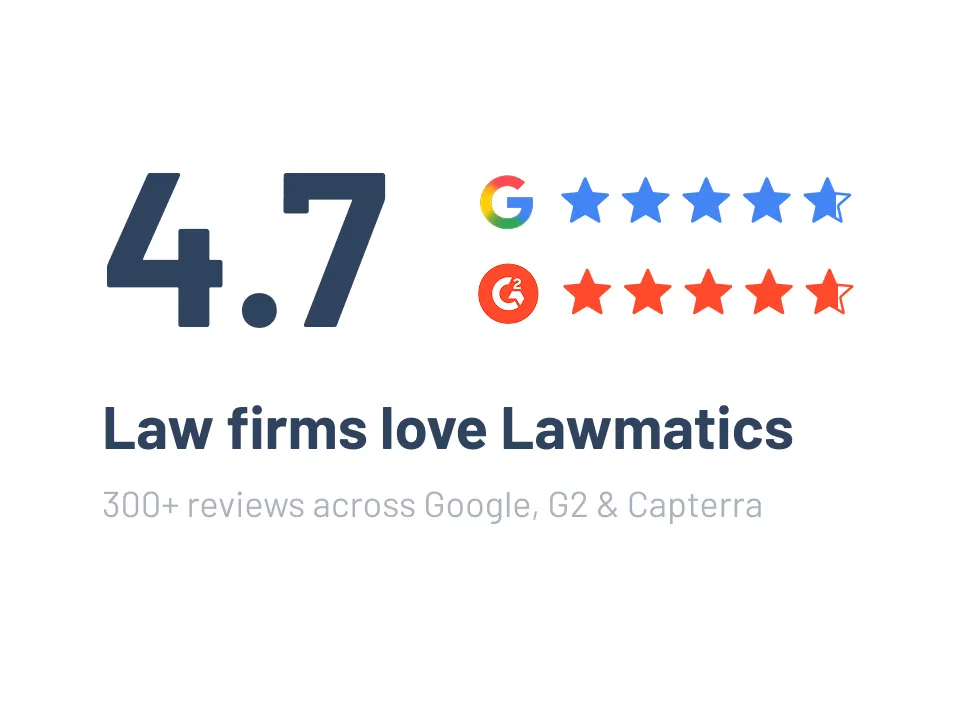




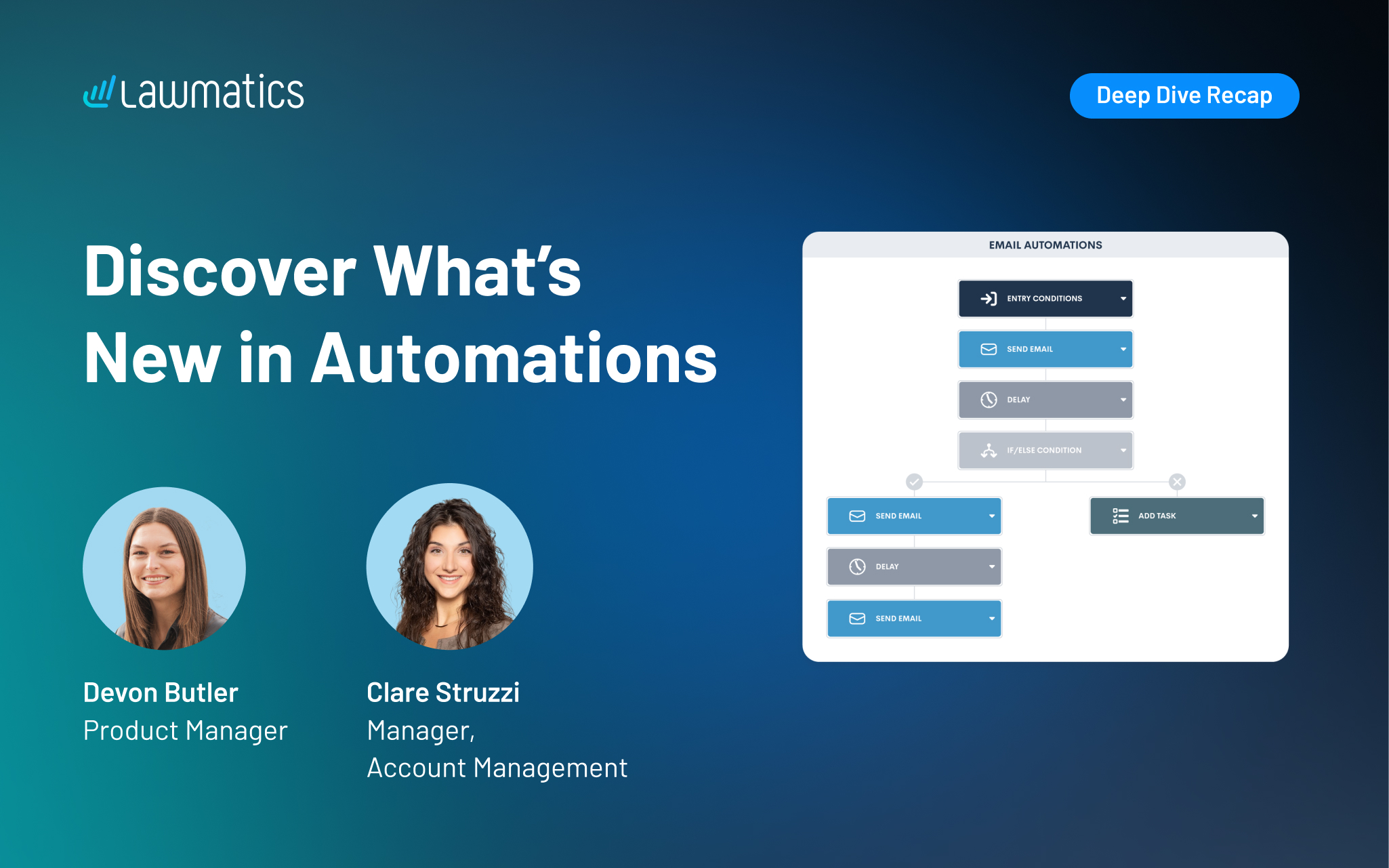




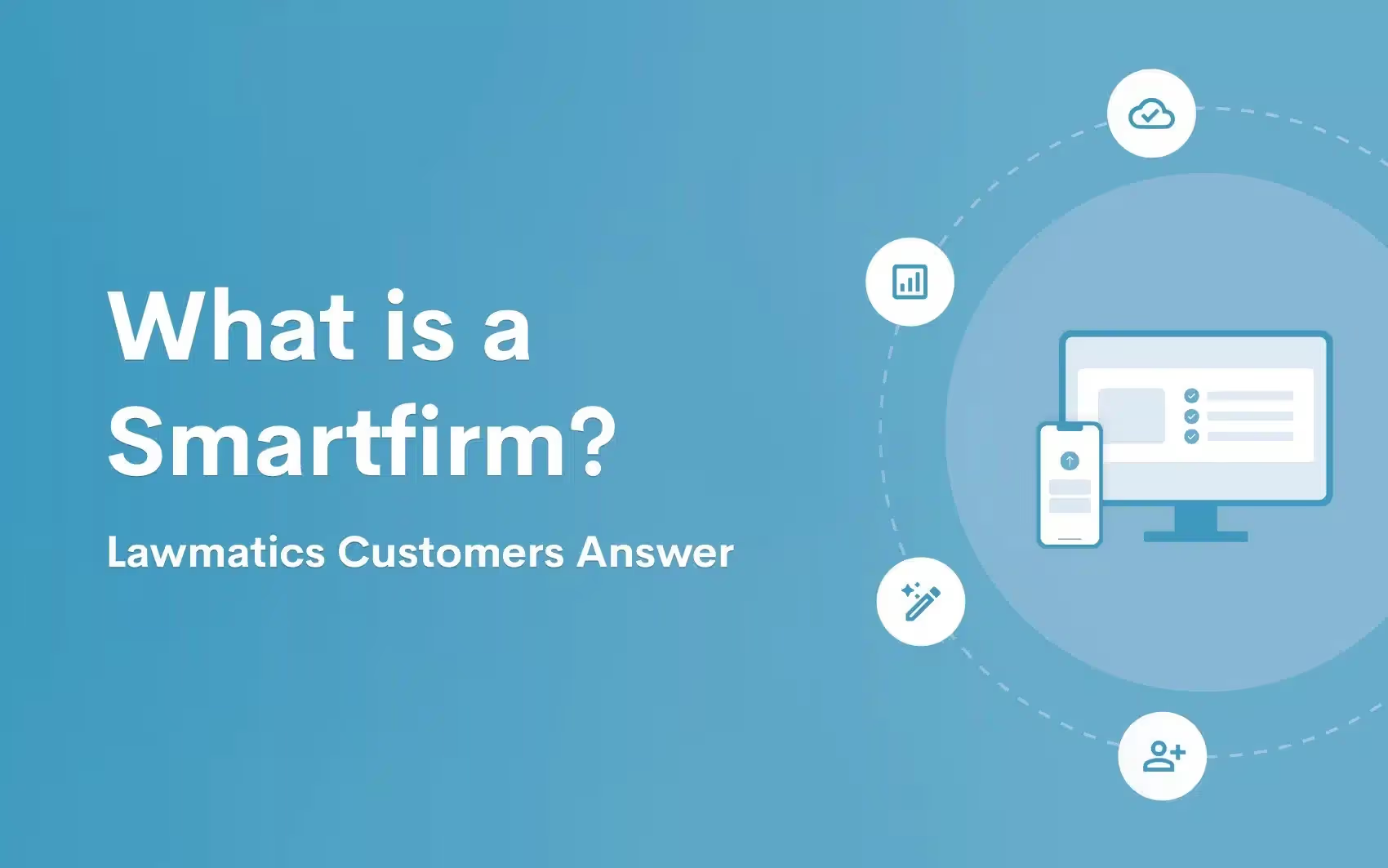

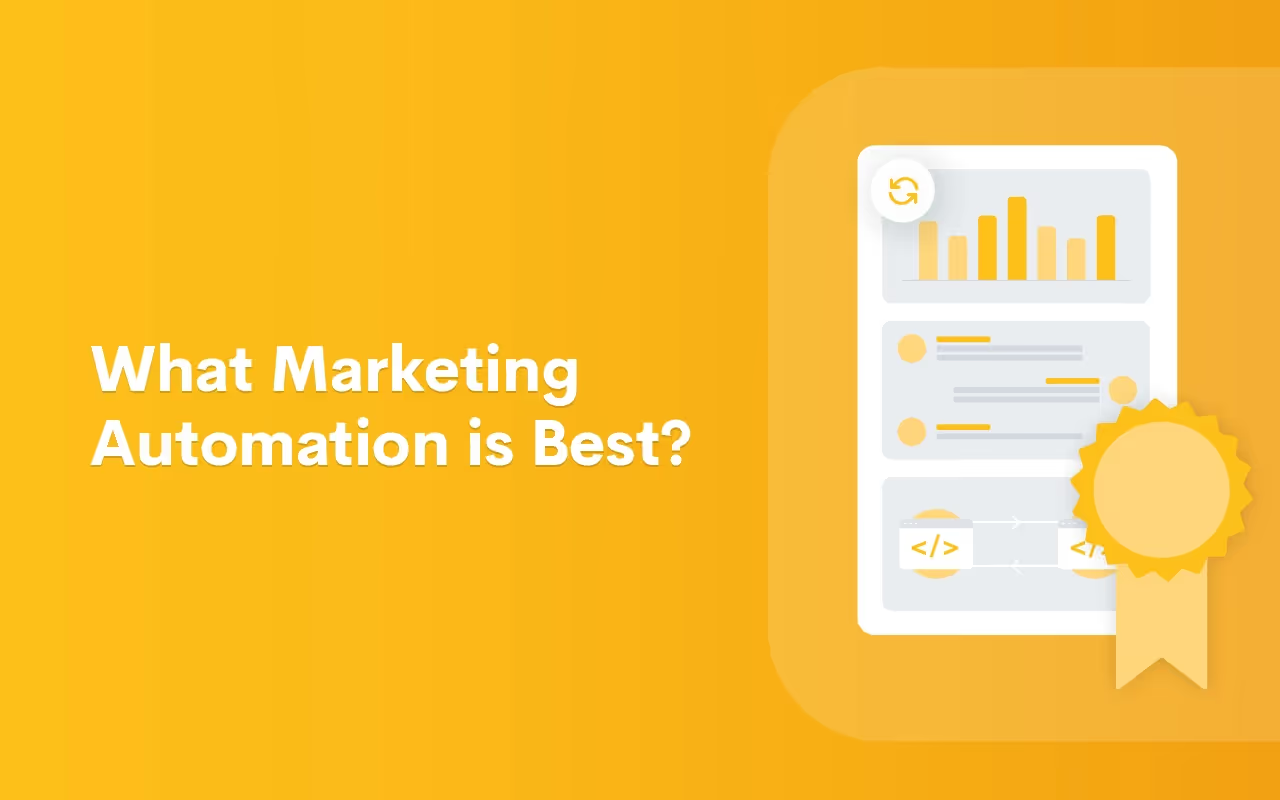
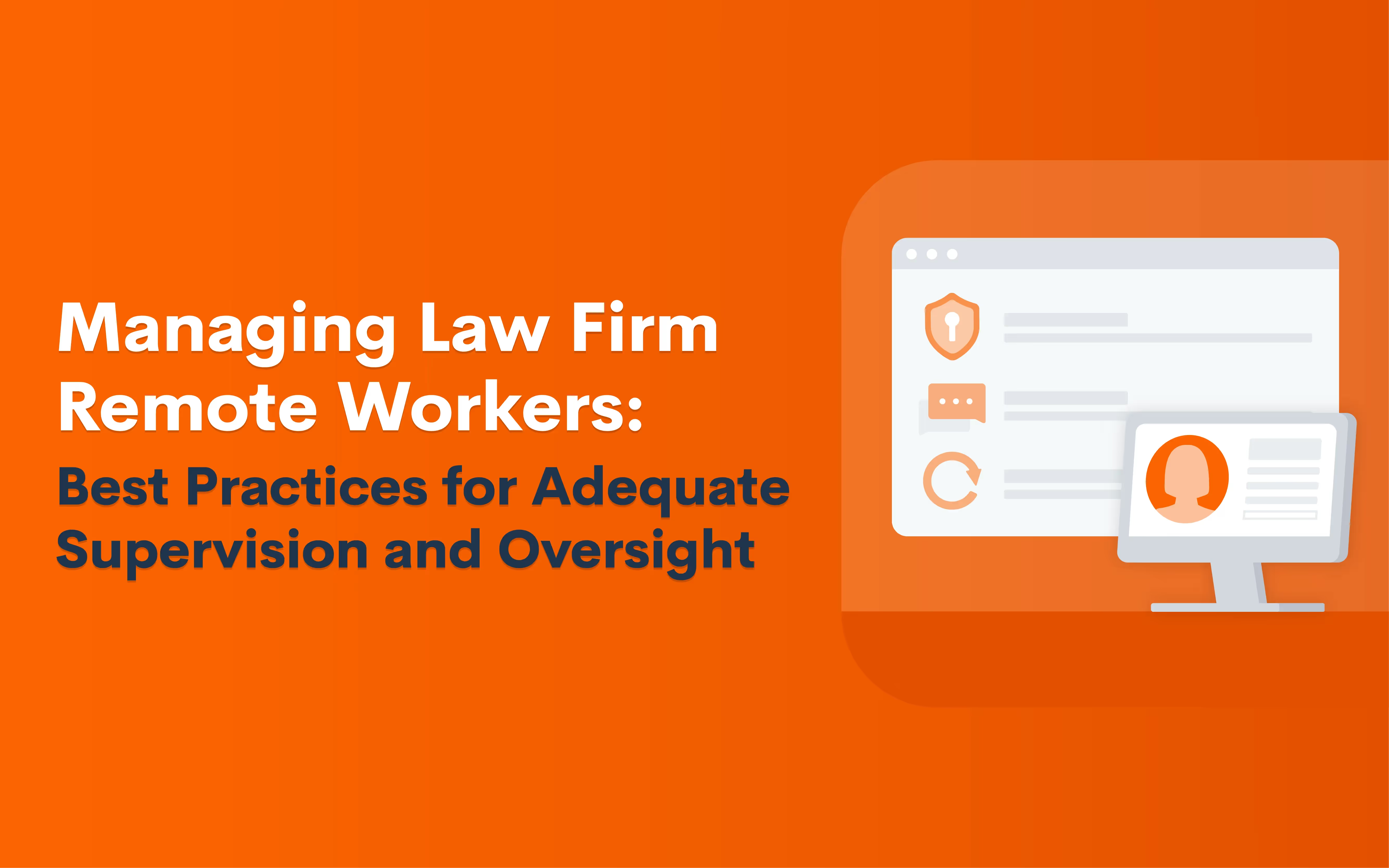
.avif)
.avif)

.avif)
